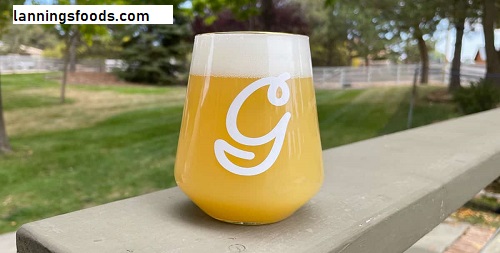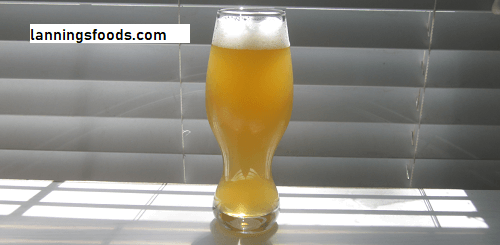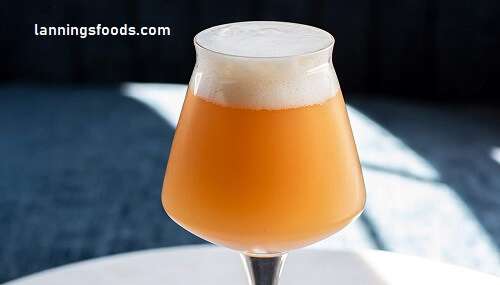Recipe for the Perfect 5-Gallon NEIPA with Cascade Hops
NEIPA Recipe:
New England IPA, or NEIPA, Recipe has been a real blow into the craft beer scene and is characterized by its appearance, juicy fruit flavors, and smooth mouthfeel. Some of the most important key ingredients that lock in this signature flavor profile are hops, and Cascade hops are one of the typical examples. This post is a more detailed 5-gallon NEIPA recipe featuring Cascade hops, tips on brewing techniques, flavor profiles, and getting the best results.
NEIPA 101:
NEIPA Recipe:
Before getting to the recipe, briefly do a quick revisit of what makes NEIPA Recipe special:

- Appearance: Generally hazy and clouded from high protein grains and dry hopping.
- Aroma and Flavor: Bursts of juicy flavors, and often tropical fruit flavor profiles with pineapple, mango, or citrus. Its mouthfeel is basically creamy and usually hits it in a range that’s not too bitter.
- Hops: Late additions and dry hopping prove the key to having that juicy aroma and flavor without overpowering bitterness.
- Okay, now let’s get brewing!
NEIPA Recipe Overview:
NEIPA Recipe:
Ingredients:
For a 5-gallon batch of NEIPA Recipe you will need the following ingredients:
Malts:
- Base Malt: 10 lbs Pale Malt (2-row)
- Flaked Oats: 2 lbs
- Carapils: 1 lb
- Wheat Malt: 1 lb
Hops:
- Cascade Hops:
- 1 oz (60 minutes)
- 2 oz (15 minutes)
- 2 oz (flameout)
- 4 oz (dry hop, split between 2 additions after primary fermentation)
Yeast:
- Yeast Strain: 1 packet of a New England yeast strain (such as Wyeast 1318 or Safale S-04)
Other Ingredients - Water: About 6.5 gallons for brewing (accounting for loss in the brew)
- Priming Sugar: To carbonate when bottling .this is typically 3/4 cup of corn sugar
Brewing Equipment:
- Brew kettle, minimum 7.5 gallons
- Fermentation vessel, 6.5-gallon carboy or bucket
- Airlock
- Thermometer
- Hydrometer
- Siphon
- Bottles and caps, or kegging equipment
Brewing Process:
NEIPA Recipe:
1. Mash:
- Heat Water: In this step, you heat about 3.5 gallons of water to a temperature of about 165°F (73°C) and set aside to use for mashing.
- Inoculation and Addition of Grains Once the water is hot, add the crushed grains, which would include Pale Malt, Flaked Oats, Carapils, and Wheat Malt. Mix well, avoiding lumps.
- Temperature to Maintain Mash Temperature As said, the mash should be kept close to 152°F (67°C) for 60 minutes. This assures the conversion of any starch in the grain into sugars, hence giving a sweeter beer end.
- Sparge: Sparge the grains with about 3 gallons of water heated to 170°F (77°C) after mashing. This should get most remaining sugars out of the grains. Collect the liquid wort in your brew kettle.
2. BoilL:
Bring to Boil: Bring the wort to a rolling boil.
Hop Additions:
- 60 minutes: Add 1 oz of Cascade hops for bitterness.
- 15 minutes: Add 2 oz of Cascade hops for flavor.
- Flameout: Once you cut the source of the heat add Cascade hops for maximum aroma, 2 oz.
- Cool the Wort: After the boil cool the wort quickly with an immersion chiller or an ice bath to about 70°F (21°C.).

3. Fermentation:
- Add to Fermentation Tank: Place the cooled wort into the fermentation tank and pour off any sediment.
- Pitch the Yeast: Simply scatter over the yeast strain onto the wort. No need to stir-the yeast will naturally rehydrate and ferment away in starting fermentation.
- Seal and Store: Seal the fermentation vessel with an airlock and let it ferment at a cool, dark location somewhere between 68-72°F (20-22°C).
- Primary Fermentation: Let fermentation run its course for about 1-2 weeks. You know that the fermentation is complete when bubbles in the airlock slow down dramatically.
4. Dry Hop:
- Primary Dry Hop Addition: Add the remaining 2 oz of Cascade hops directly into the fermenter once primary fermentation has completed. This will add more aromatics.
- Secondary Dry Hop Addition: Add in the remaining 2 oz of Cascade hops after 3 to 5 days in order to further develop the aroma.
- Time: Allow the hops to sit for 3 to 5 days prior to your bottling time.
5. Bottling:
- Priming Sugar: Heat 3/4 of a cup of corn sugar to boiling with roughly 2 c of water for the priming brim. Cool. Add this to the bottling bucket.
- Rack the Beer: Rack the beer from the fermentation vessel into the bottling vessel. Rack gently, mixing in the priming sugar solution.
- Bottle: Bottle your beer in sanitized bottles, leaving an inch of headroom at the top of the bottle. Cap the bottles tightly.
6. Conditioning:
Condition: Store the bottles at room temperature for about 1-2 weeks to carbonate. Then, place them in a cool place or refrigerate before serving.
Perfect NEIPA Tips:
NEIPA Recipe:
- Water Chemistry: Pay attention to your water chemistry. A softer water profile with higher chloride levels does tend to enhance the roundness and mouthfeel.
- Temperature Control: The most important factor is keeping the fermentation temperature consistent. Off-flavors come from temperature variations.
- Hops: Use a combination of hops, such as Cascade, but add some others, like Citra or Mosaic, for an interesting flavor profile.
- Haze: Do not obsess over haze in the brewhouse process. This will happen during fermentation and conditioning.
Flavor Profile:
NEIPA Recipe:
Now that your beer is carbonated and you can pour it and taste it, it should have a flavor profile that is as follows:
Aroma:
Juicy, a mix of grapefruit, pine, and floral characteristics from the Cascade hop with just a hint of malt sweetness.
Taste:
Tropical fruit, citrus, and stone fruit flavors abound in the taste with a silky, creamy mouthfeel. Bitterness is low and balance lets the hop flavors shine through.
Finish:
Long fruity finish with soft bitterness that makes you reach for another sip.
Pairing Suggestions:
NEIPA Recipe:
- This Cascade-hopped NEIPA pairs amazingly well with any of the following:
- Spicy Foods: The fruit flavors complement spicy dishes like Thai curry or spicy tacos.
- Barbecued Meats: This most certainly accompanies the taste of grilled chicken or pork, so smoky flavors.
- Cheese: This is a complement to such creamy cheeses as Brie and sharp blue cheese for a taste contrast .
Conclusion:
NEIPA Recipe:
Brewing with Cascade hops a 5-gallon NEIPA is very fun and rewarding because it does fulfill the promise of delivering a deliciously juicy taste in beer. All it takes for you to craft your brew that embodies all characteristics this popular style entails are the right ingredients and techniques.
Now, go ahead and try the recipe to your taste, experimenting with versions and blending different hops and malt profiles. Raise a glass to great homebrewing!
Frequently Asked Questions About 5-Gallon NEIPA Recipe with Cascade Hops:
NEIPA Recipe:
1. Why use Cascade hops in making a NEIPA?
Cascade hops are strongly floral, grapefruit and citrusy, that impart a good bitterness balance on the beer whilst this balances the fruity profile. Other highlights within the flavor profile of this brew feature grapefruit and pine flavours, that really don’t take away the juiciness of the characteristic NEIPA.
2. How do I dial in this bitterness for my NEIPA?
Hop wise, you can dial in your additions to control bitterness. In beer that you brew to be less bitter, you can use fewer hops in the 60-minute boil but lay more emphasis on late hop additions and dry hopping. The more late and dry hops you use, the more your aroma and flavor contributions without too much increase in bitterness.
3. Which yeast is used to make a NEIPA?

Yeast strain: For NEIPA, Wyeast 1318 (London Ale III) is a good choice, or you may also use a yeast like Safale S-04. Both strains will produce fruity esters as well as a soft mouthfeel that are characteristic of NEIPA. Be sure fermentation temperature control so off-flavored compounds produced during fermentation are not an issue.
4. How long should I dry hop my NEIPA?
To complete with perfect aroma, dry hop your NEIPA for about 3 to 7 days after primary fermentation. Many brewers space out two separate dry hop additions: one at the midpoint of fermentation, then another right before bottling, to add layer upon layer of hop flavor and aroma.
5. How do I get my NEIPA to the haze level I want it to hit?
To try to duplicate the signature haze, add some flaked oats and wheat to your grain recipe, then forgo filtration and pack that beer full of dry hops. The haze will form in fermentation and conditioning, so be patient!